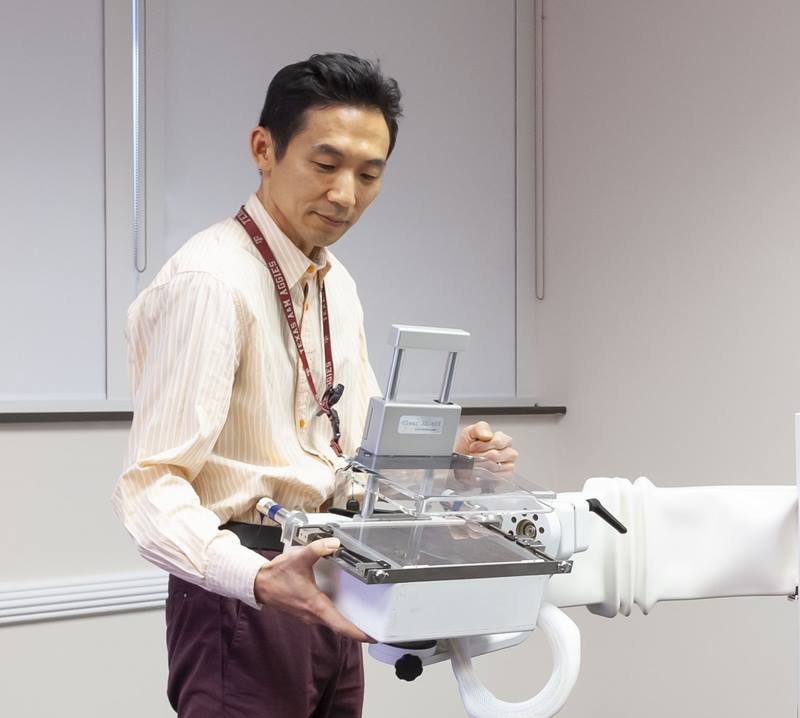The Science
In breast cancer screening, an imaging technique based on nuclear medicine is currently being used as a successful secondary screening tool alongside mammography to improve the accuracy of the diagnosis. Now, a team is hoping to improve this imaging technique. The technique is known as molecular breast imaging or breast specific gamma imaging. The team, including Seung Joon Lee at Thomas Jefferson National Accelerator Facility (Jefferson Lab), added the Variable Angle Slant Hole (VASH) collimator. The addition maintains or improves image quality and precise location within the breast. Simultaneously, it reduces patient radiation dose.
The Impact
When used in a molecular breast imager, the VASH collimator allows the imager to capture 3-D molecular breast images at higher sensitivity than current 2-D scans. Full system tests demonstrate that it could provide up to six times better contrast of tumors in the breast. Gaining the higher contrast does not interfere with image quality (improving it in some cases), and it decreases the radiation dose to patients.
Summary
To screen for breast cancer, medical offices use imaging techniques based on nuclear medicine to reduce the number of false positive results rendered by mammography alone. While a mammogram shows the structure of breast tissue, molecular breast imagers show tissue function. For instance, cancer tumors are fast growing, so they gobble up certain compounds more rapidly than healthy tissue; a radiopharmaceutical made of that compound will quickly accumulate in tumors. As the pharmaceutical decays, it gives off gamma rays. To focus the gamma rays, current molecular breast imaging systems use a traditional collimator, which is essentially a rectangular plate of dense metal with a grid of holes, to “filter” the gamma rays for the camera. The collimator helps produce a clear, well-defined image of any cancer tumor. Researchers at Jefferson Lab, Dilon Technologies, and the University of Florida developed the VASH collimator for 3-D imaging of the breast. They constructed it from a stack of 49 tungsten sheets, each one a quarter of a millimeter thick and containing an identical array of square holes. Two small motors slide the individual sheets by their edges. Sliding the sheets changes the angle of the array of square holes in the stack. The result is a systematic varying of the focusing angle of the collimator during the imaging procedure. In system tests, the team found that while using the VASH collimator with an existing breast molecular imaging system, they could get six times better contrast of tumors in the breast. With this higher contrast, imagers could potentially reduce the amount of radiopharmaceutical used, thus halving the radiation dose to the patient, while maintaining the same or better image quality. The results match a published paper that predicted this performance via a Monte Carlo simulation.
Jefferson Lab was awarded a patent for this novel mechanism that has been licensed to Dilon Technologies. Additionally, Jefferson Lab and Dilon Technologies have entered into a Cooperative Research and Development Agreement to further advance this technology to commercialization.
Funding
The collimator was built at Thomas Jefferson National Accelerator Facility (a Department of Energy, Office of Science national laboratory) and the test results were analyzed at the University of Florida’s Department of Biomedical Engineering with funds provided by a Commonwealth Research Commercialization Fund grant from the Commonwealth of Virginia’s Center for Innovative Technology, with matching support provided by Dilon Technologies.
Original post https://alertarticles.info


